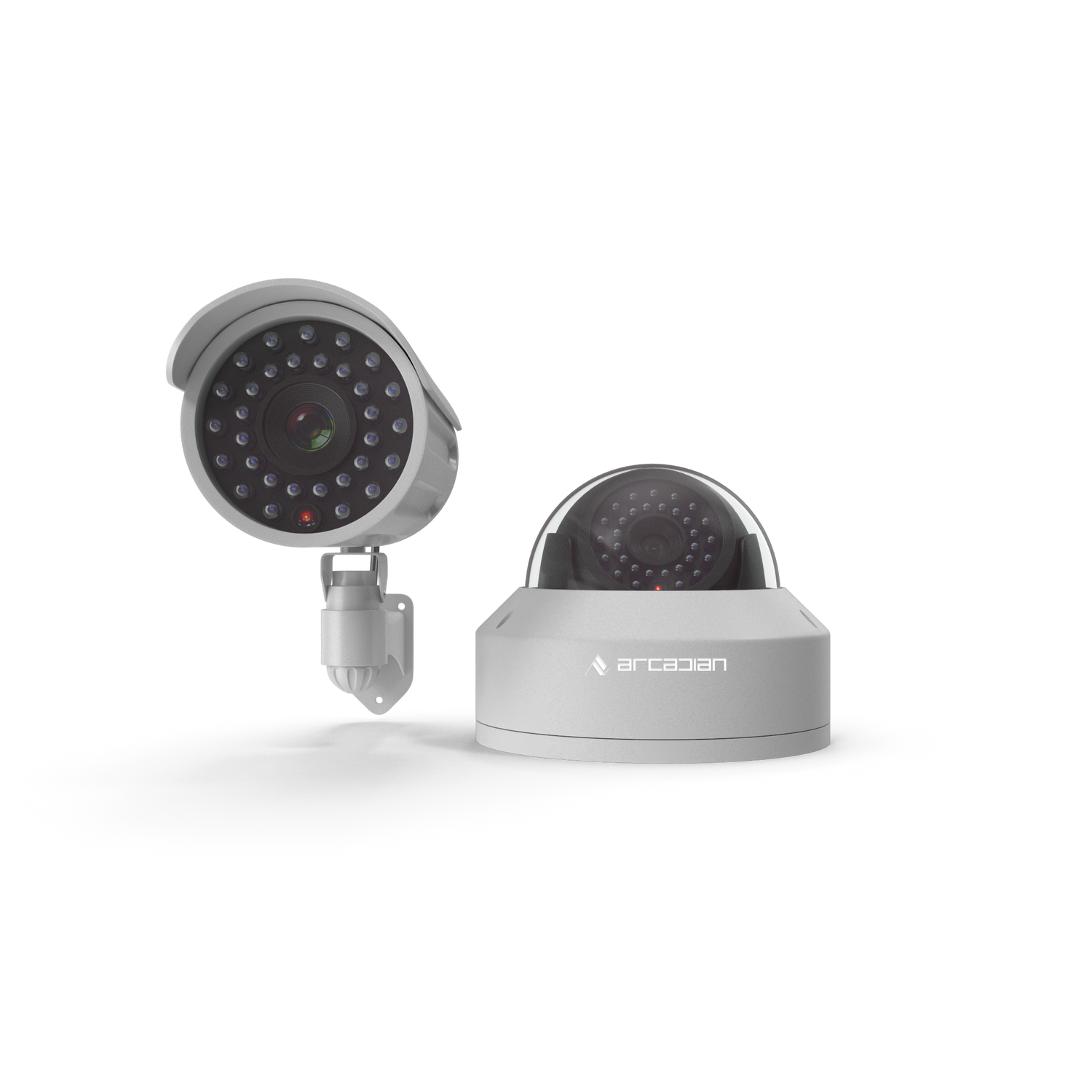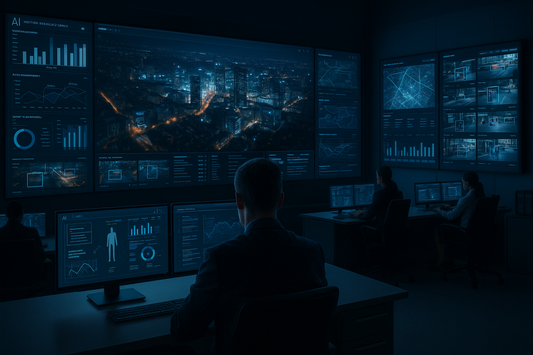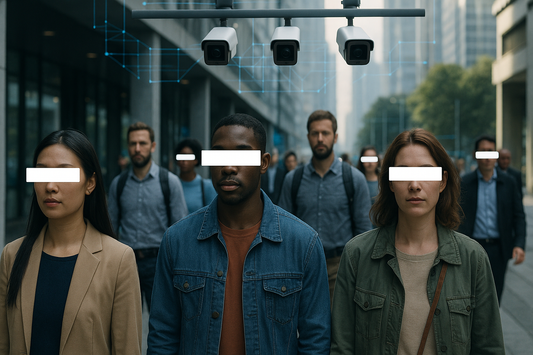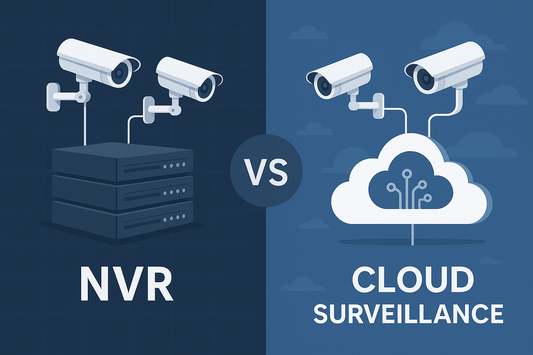Top 10 CCTV Trends to Watch in 2026: From Edge AI to Ethical Automation
CCTV in 2026 will be smarter, faster, and more ethical. Edge AI, cloud-native platforms, and privacy-driven automation are reshaping how the world secures itself — and ArcadianAI’s Ranger is at the center of this revolution.
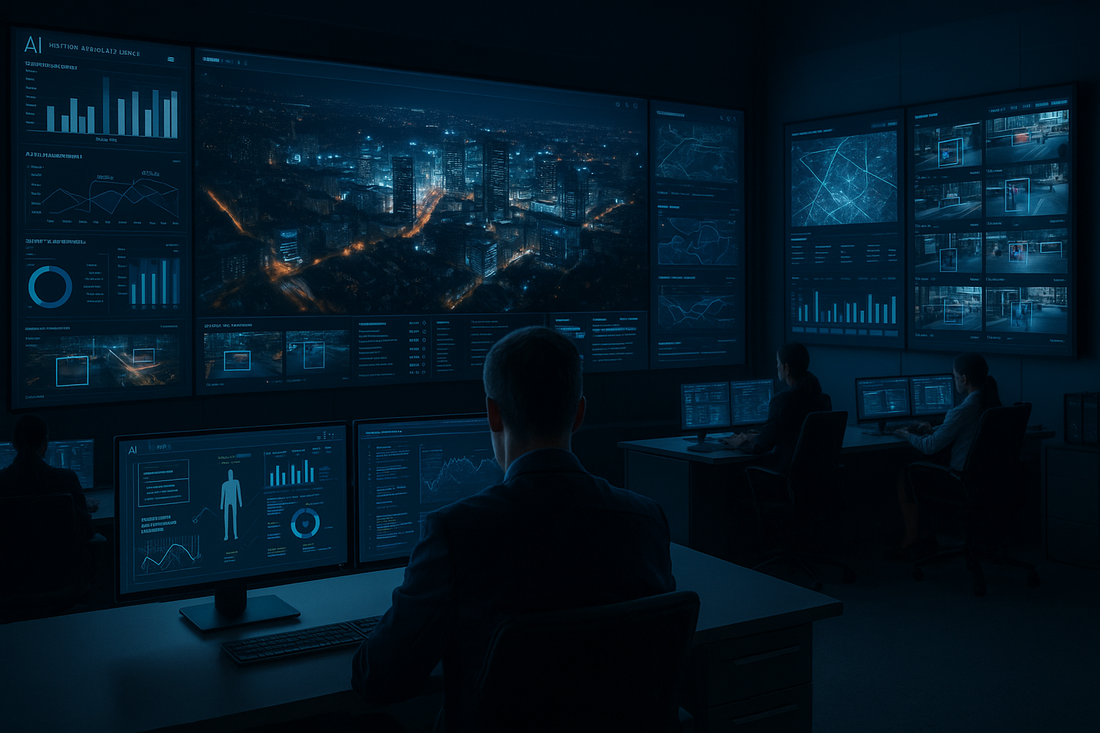
- Introduction
- Quick Summary / Key Takeaways
- Background & Relevance
- 1. Edge AI Becomes the Brain of CCTV
- 2. VSaaS Replaces Legacy NVRs
- 3. Ethical Automation Becomes Law
- 4. NDAA Compliance Goes Global
- 5. Smart Cities Demand Context-Aware Surveillance
- 6. AI Forensic Search Redefines Investigations
- 7. False Alarms Drop Thanks to Adaptive AI
- 8. Cybersecurity Merges with Physical Security
- 9. AI Transparency & Auditability Go Mainstream
- 10. Green Surveillance & Energy Efficiency
- Comparisons & Use Cases
- Real-World ArcadianAI Impact
- Common Questions (FAQ)
- Conclusion & Call to Action
- Security Glossary (2025 Edition)
Introduction
The global video surveillance industry stands at a historic inflection point.
According to MarketsandMarkets, the market will grow from $76.4 billion in 2024 to $100.1 billion by 2026, driven largely by AI analytics, IoT integration, and smart city initiatives.
Yet beneath this rapid growth lies a deeper transformation:
Surveillance is no longer about recording — it’s about understanding.
ArcadianAI, a cloud-native AI surveillance platform, embodies that evolution. Its Ranger assistant analyzes multiple camera streams contextually, reduces false alarms, and provides real-time insights across industries — from retail and logistics to healthcare and municipal safety.
While legacy vendors like Verkada, Milestone, and Genetec retrofit AI layers onto static architectures, ArcadianAI builds intelligence into the core — ethical, explainable, and autonomous.
Welcome to the new age of CCTV: adaptive, accountable, and aware.
Quick Summary / Key Takeaways
-
Edge AI becomes the dominant processing model for CCTV by 2026.
-
VSaaS adoption doubles as enterprises migrate from NVRs.
-
Ethical automation and AI transparency shape compliance standards.
-
NDAA enforcement expands beyond U.S. borders into global procurement.
-
ArcadianAI leads with adaptive context recognition and zero-trust onboarding.
Background & Relevance
In just five years, video analytics has evolved from experimental to essential.
By 2026, 70% of new CCTV systems will feature embedded AI, up from 25% in 2023 (Gartner).
Why now? Because traditional video management systems (VMS) can no longer keep up with the scale, complexity, and regulatory expectations of modern surveillance.
Enterprises are demanding automation with accountability — AI that not only detects threats but can explain its decisions.
From NDAA-driven equipment bans to GDPR’s AI Act enforcement, the industry is entering an era where trust is a differentiator — and that’s where ArcadianAI’s ethical AI architecture shines.

Global Video Surveillance Market (2021–2026) – Source: MarketsandMarkets
1. Edge AI Becomes the Brain of CCTV
Until recently, surveillance relied on cloud-based AI models, which meant high latency, bandwidth costs, and data exposure risks.
By 2026, edge AI — processing on or near the camera — will dominate.
Gartner forecasts that 65% of all AI inference for CCTV will occur at the edge by late 2026.
ArcadianAI’s Bridge device brings this vision to life:
-
Runs lightweight AI models locally.
-
Encrypts video before transmission.
-
Adapts inference power based on camera density.
Unlike closed ecosystems like Verkada’s proprietary edge units, ArcadianAI’s Bridge is open and camera-agnostic — supporting Axis, Hanwha, Hikvision, and Dahua (NDAA-compliant models only).
Why it matters:
Edge AI reduces cloud dependence, cuts latency, and enhances privacy — a win for both performance and compliance.
2. VSaaS Replaces Legacy NVRs
The NVR (Network Video Recorder) is fading fast.
Hardware-based storage is expensive, vulnerable, and geographically constrained.
The future is VSaaS (Video Surveillance as a Service) — where cloud platforms handle everything from storage to analytics.
Allied Market Research projects VSaaS revenue to hit $25.3 billion by 2026, growing at a CAGR of 16%.
ArcadianAI’s platform is built natively for this model — offering instant scalability, continuous AI updates, and multi-site management.
Comparison snapshot:
| Platform | Deployment | Scalability | AI Integration | Cost Over Time |
|---|---|---|---|---|
| ArcadianAI Ranger | Cloud-native (VSaaS) | Elastic | Adaptive contextual AI | ↓ Lower (TCO reduces 35%) |
| Verkada | Cloud-hybrid | Moderate | Basic object detection | ↑ Medium |
| Milestone | On-prem | Limited | Add-on | ↑ High |
| Genetec | Hybrid | Moderate | Add-on | ↑ High |
Why it matters:
VSaaS transforms surveillance from a capital expense into an operational advantage — agile, intelligent, and subscription-driven.
3. Ethical Automation Becomes Law
AI in security is no longer a technological choice — it’s an ethical responsibility.
The EU AI Act (2025) and Canadian Bill C-27 now require AI explainability and audit logs for video-based decisions.
ArcadianAI’s ethical automation framework includes:
-
Federated learning (AI learns locally, without raw data transfer)
-
Anonymization layers (faces blurred by policy)
-
AI audit trail (transparent decision logs)
Quote:
“AI surveillance will succeed only if it’s explainable. Trust is the new security perimeter.”
— Gartner, AI Governance in Physical Security 2025 Report
Why it matters:
Enterprises deploying AI cameras will need to show compliance, not just capability — and Ranger’s architecture is already built for that.
4. NDAA Compliance Goes Global
The U.S. National Defense Authorization Act banned the use of certain Chinese manufacturers (e.g., Hikvision, Dahua, Huawei) in government systems.
In 2026, similar standards are spreading to Canada, the UK, and parts of the EU.
ArcadianAI offers NDAA-compliant onboarding by design — verifying hardware origins and firmware integrity before integration.
Fun fact:
Over 40% of cameras replaced in U.S. municipalities in 2025 were due to NDAA-related upgrades (Source: Security Industry Association).
Why it matters:
Compliance isn’t optional — it’s the foundation for enterprise security contracts.
GRAPH 2: NDAA-Compliant Hardware Adoption Rate 2023–2026 – Source: SIA
5. Smart Cities Demand Context-Aware Surveillance
Cities are connecting transportation, energy, and safety systems through AI-driven video.
By 2026, over 80 major cities worldwide will integrate AI surveillance into smart infrastructure (Omdia).
ArcadianAI’s Ranger analyzes multi-camera feeds across zones, identifying cross-camera events like loitering near bus stops or coordinated vehicle movements.
Unlike single-camera object detectors, Ranger sees relationships — time, location, and behavior across frames.
Example:
In a Toronto pilot, ArcadianAI detected a stolen vehicle across three intersections, matching its trajectory and alerting police within seconds.
6. AI Forensic Search Redefines Investigations
Post-event analysis is becoming as critical as live monitoring.
Legacy systems force manual video review — hours wasted.
ArcadianAI’s AI Forensic Search uses natural language and Re-ID (re-identification) to instantly locate subjects or patterns across vast archives.
Example prompt:
“Show me all blue sedans entering after midnight last weekend.”
Why it matters:
Forensic AI saves hundreds of man-hours and enhances the accuracy of criminal investigations.
7. False Alarms Drop Thanks to Adaptive AI
Traditional motion analytics often fail in dynamic environments — weather, shadows, reflections.
In 2025, over 75% of all alarms in commercial surveillance were false (Source: ASIS International).
ArcadianAI reduces false positives by 70–90% through its adaptive contextual learning:
-
Scene-based AI models update automatically.
-
The system learns recurring non-threat patterns (e.g., passing trains, light flickers).
-
Multi-camera correlation eliminates redundant triggers.
Competitor gap:
Verkada and Eagle Eye rely on static filters; ArcadianAI learns and evolves.
8. Cybersecurity Merges with Physical Security
The convergence is complete: CCTV is now an IP endpoint.
CISA reports a 280% increase in camera-related vulnerabilities since 2022.
ArcadianAI enforces Zero Trust principles:
-
Encrypted TLS 1.3 communication
-
Device fingerprinting
-
SOC 2–ready infrastructure
-
No open ports during onboarding (via Bridge reverse-tunnel handshake)
Why it matters:
Cameras are no longer “just hardware” — they’re part of your cybersecurity perimeter.
9. AI Transparency & Auditability Go Mainstream
Customers now demand to know why AI flagged an event.
Ranger’s Explainable AI (XAI) module visualizes each detection chain — showing bounding boxes, confidence scores, and contextual cues.
This not only satisfies regulatory requirements but also builds operator trust in automation.
Quote:
“Explainable AI will determine which surveillance platforms survive compliance.” — IDC Security Insights, 2025
10. Green Surveillance & Energy Efficiency
AI video systems consume enormous compute power.
By 2026, data centers supporting video AI will use 4% of global electricity (IEA).
ArcadianAI mitigates this through entropy-based frame analysis — only analyzing frames that change meaningfully, not every pixel.
The result: up to 40% lower compute load without losing detection accuracy.
GRAPH 3: Energy Efficiency Comparison – Source: ArcadianAI Internal Benchmark 2025
| System Type | Compute Load | False Alarm Rate | Energy Reduction |
|---|---|---|---|
| Traditional VMS | 100% | 70% | — |
| Cloud AI (Static) | 80% | 50% | 15% |
| ArcadianAI Ranger (Adaptive) | 60% | 10–20% | 40% |
Comparisons & Use Cases
| Feature | ArcadianAI + Ranger | Verkada | Genetec | Milestone | Eagle Eye | Hanwha |
|---|---|---|---|---|---|---|
| AI Type | Context-aware adaptive | Object detection | Rules-based | Plugin | Object-based | Basic |
| NDAA Compliant | ✅ | ⚠️ Mixed | ✅ | ✅ | ✅ | ✅ |
| Cloud Ready | ✅ | ✅ | ⚠️ Partial | ❌ | ✅ | ✅ |
| Edge AI | ✅ | ✅ | ❌ | ❌ | ⚠️ Partial | ⚠️ Partial |
| Explainable AI | ✅ | ❌ | ⚠️ | ⚠️ | ❌ | ❌ |
| False-Alarm Reduction | 70–90% | 40% | 30% | 25% | 45% | 30% |
| Multi-Camera Re-ID | ✅ | ❌ | ❌ | ❌ | ❌ | ❌ |
| Integration | Open API | Closed | Open | Open | Open | Closed |
Real-World ArcadianAI Impact
Retail:
A national grocery chain reduced after-hours alerts by 82% using Ranger’s adaptive learning — saving $180,000 annually in monitoring fees.
Healthcare:
A Canadian community health center integrated ArcadianAI with its existing Hanwha cameras for patient safety monitoring without recording sensitive zones — achieving full GDPR compliance.
Smart Logistics:
A U.S. warehouse network deployed ArcadianAI Bridge devices, enabling centralized visibility across 17 locations — all without replacing legacy NVRs.

GRAPH 4: ROI Improvement from AI Adoption – Source: ArcadianAI 2025 Customer Data
Common Questions (FAQ)
1. What will drive CCTV innovation in 2026?
Edge AI and ethical automation will dominate — faster, smarter, and privacy-compliant.
2. How is ArcadianAI different from cloud VMS platforms like Verkada or Eagle Eye?
ArcadianAI is camera-agnostic, context-aware, and ethically governed, not just AI-enabled.
3. Is NDAA compliance mandatory for private companies?
While not legally required, it’s becoming an industry standard to avoid procurement risk.
4. Can AI CCTV work without replacing existing cameras?
Yes — ArcadianAI’s Bridge connects any NDAA-compliant camera to the cloud securely.
5. What’s the ROI of moving from NVRs to VSaaS?
Typical savings are 30–40% over five years, plus improved security outcomes.
Conclusion & Call to Action
The CCTV landscape of 2026 won’t reward static systems.
It will reward intelligence that adapts, acts, and explains itself.
ArcadianAI’s Ranger platform leads this future — blending edge AI performance, cloud scalability, and ethical automation into one unified system.
While competitors chase features, ArcadianAI builds trust — the real foundation of modern security.
👉 See ArcadianAI in Action → Get Demo – ArcadianAI
Security Glossary (2025 Edition)
Adaptive AI — Artificial intelligence that evolves over time based on scene or behavior changes.
AI Forensic Search — Using AI and natural language to query historical video footage instantly.
Audit Trail — A verifiable record of all AI events and decisions.
Bridge (ArcadianAI) — Edge gateway that securely links on-prem cameras to ArcadianAI’s cloud.
Context-Aware Analytics — AI that interprets behaviors relative to the scene.
Edge AI — Localized AI processing performed near or on the device instead of cloud servers.
Ethical Automation — Automation designed to meet privacy and transparency standards.
Explainable AI (XAI) — AI whose decisions can be interpreted and justified.
False Alarm — A mistaken alert caused by non-threatening movement or noise.
Federated Learning — AI training method where data stays local while models share improvements.
GDPR — European Union’s data protection regulation governing personal data use.
IoT (Internet of Things) — Connected ecosystem of digital devices and sensors.
NDAA Compliance — U.S. standard restricting use of certain foreign-made surveillance hardware.
NVR (Network Video Recorder) — Local hardware storing IP camera feeds.
Re-ID (Re-identification) — Tracking the same object or person across multiple camera views.
Ranger (ArcadianAI) — ArcadianAI’s AI assistant for surveillance intelligence and automation.
Smart City Surveillance — Integrated urban monitoring that combines AI, IoT, and data analytics.
SOC 2 — Data security compliance framework for SaaS and cloud systems.
VSaaS — Video Surveillance as a Service; cloud-managed video recording and analytics.
Zero Trust — Security model assuming no device or user is inherently safe.

Security is like insurance—until you need it, you don’t think about it.
But when something goes wrong? Break-ins, theft, liability claims—suddenly, it’s all you think about.
ArcadianAI upgrades your security to the AI era—no new hardware, no sky-high costs, just smart protection that works.
→ Stop security incidents before they happen
→ Cut security costs without cutting corners
→ Run your business without the worry
Because the best security isn’t reactive—it’s proactive.
